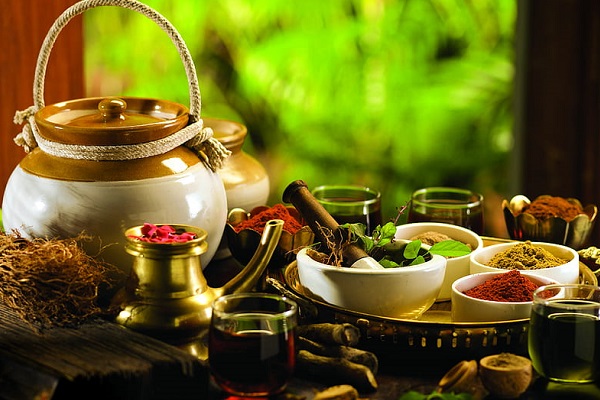Words: Dr SWETHA S
Ayurveda is a unique life science. It focuses on harmonious balance between our mind, body and spirit. Its principles are deep-rooted — in the vast expanse of ancient Indian philosophy. Ayurveda has been practiced for thousands of years.
Ayurveda principles continue to hold relevance in modern times; its popularity is growing day-by-day.
Ayurveda pharmacopoeia comprises of drugs, derived not only from herbs, but also from minerals, metals and animal products.
Rasa Shastra is a specialised branch of Ayurveda. It deals exclusively with minerals and metals — and, the drugs formulated, from them, are known as Rasaoushadhis. This is, again, a significant branch of Ayurveda pharmacopoeia.
Rasa Dravyas — mostly inorganic in their attributes — are unique from other medicines, thanks to their special attributes, viz., instant effectiveness, small dosages, and extensive therapeutic utility, irrespective of constitutional variations. They are mostly tasteless, easy to administer, and have a long shelf-life. The Rasaoushadhis have rasayana properties — they provide benefits from the macro- to micro-cellular levels. They also boost our immune system, while keeping diseases, or illnesses, at bay.
The Evolution
The evolution of Rasa Shastra as a specialised branch of Ayurveda may be traced to the great Buddhist sage, Nagarjuna, the ‘Father of Rasa Shastra.’ Rasa Shastra is believed to have reached its acme, in terms of its scientific classification and documentation around 8th Century AD.
The minerals and metals as compared to plants, or animal produce, may not be compatible with human body constitution. They are not to be consumed in their natural form, as they are non-edible, hard and filled with impurities, since they are directly procured from earth. This is the first obstacle in their consumption — for therapeutic purposes.
To make them compatible and edible for therapeutic usage, such minerals and metals are subject to intensive, elaborate and sophisticated processing with different plants and animal products. The whole intent of such vigorous processes is to make them harmless to the body. In other words, to make them free from toxicity when used in therapeutic doses.
The first and foremost part in the processing mechanism is shodhana — purification. Every mineral and metal ought to undergo this process. This step is the most essential as it removes physical impurities present in the raw material. The rest of the process involves elimination of chemical impurities and converting them to edible and safe forms for therapeutic doses. The final product is subject to different physical and chemical tests to confirm the safety of the medicine.
Such tedious and lengthy processes that are mandatory convert minerals and metals to their nano-form. This makes them not only more biocompatible, but it also helps in their quick absorption in the body.
Safety
It is noteworthy that caution is imperative for every metal, or mineral, used in therapeutics — especially in terms of their harmful and toxic effects, if any, more so, in the event of improper, or inadequate, processing. This also includes particulars of antidotes to offset, or annul, their toxicity. You may call this the Ayurveda safety protocol — it is paramount to Ayurveda practice.
The safety and toxicity of Rasa Dravyas are time-tested. Yet, it is important to note that Rasaoushadhis have to be used only under the guidance and supervision of a professional Ayurveda physician.
Self-medication should be strictly avoided.
Also, most medicines ought to be used only for a certain period of time — they have to be discontinued once the desired effects ensue.
Proper dosages are also just as important. As Acharya Charaka articulates, “There is not a single substance in the universe which does not have the potential to be used as a drug, provided it is used judiciously by the physician, where it is required.”
The bottom line. Rasaoushadhis, when used prudently, deliver good, measurable and replicable effects in treating different diseases, or illnesses.

